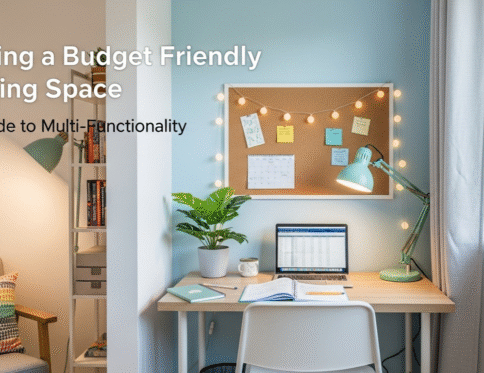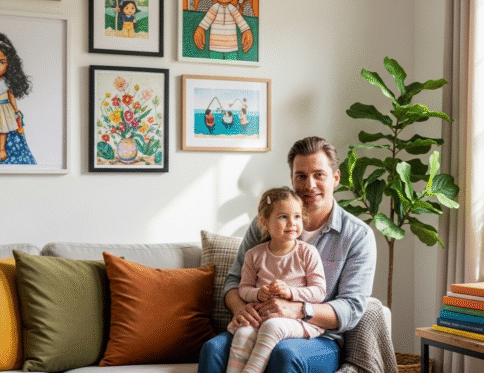Choosing a color for your child’s room is an exciting part of preparing for a new arrival or redecorating a play area. However, the type of paint you select is one of the most critical decisions for their health and safety. Traditional paints often contain harmful chemicals known as Volatile Organic Compounds (VOCs), which can pose significant health risks, particularly for young children. This guide delves into why VOC-free paints are the definitive choice for creating a secure and healthy environment for your little ones to flourish.
Understanding VOCs and Their Effect on Indoor Air Quality
Volatile Organic Compounds (VOCs) are chemicals that are emitted as gases from certain solids or liquids. These compounds are prevalent in numerous household products, including conventional paints, varnishes, and even some cleaning supplies. When you apply a standard coat of paint, these VOCs are released into the air through a process called “off-gassing,” which can persist for months or even years after the paint has dried.
The issue of poor indoor air quality has become a major health concern, with research indicating that the air inside our homes can be substantially more polluted than the air outdoors. For children, whose respiratory and immune systems are still in the developmental stages, exposure to these airborne chemicals can be especially detrimental. This underscores the importance of selecting non-toxic paint for sensitive areas like nurseries and playrooms.
The Health Dangers Associated with VOCs in Children
Children are inherently more susceptible to the adverse effects of VOCs due to their smaller body mass and higher respiratory rates. Exposure to these chemicals can trigger a variety of health problems, ranging from temporary discomfort to more severe, long-term conditions.
Some of the immediate symptoms of VOC exposure may include:
- Headaches and feelings of dizziness
- Nausea and general discomfort
- Irritation of the eyes, nose, and throat
- Allergic reactions on the skin
Prolonged exposure has been associated with more serious health complications, making the selection of child-safe paint a fundamental aspect of ensuring children’s room safety. By choosing VOC-free paints, you are taking a crucial, proactive measure to safeguard your child from these potential health hazards.
The Solution: The Advantages of VOC-Free and Zero-VOC Paints
Thankfully, safer alternatives are readily available. VOC-free paints and zero-VOC paints are specifically formulated to contain minimal to no volatile organic compounds. Here are the primary reasons they are the superior option for a healthy nursery:
- Enhanced Indoor Air Quality: The most significant advantage is the substantial improvement in indoor air quality. Utilizing VOC-free paints eliminates a primary contributor to indoor air pollution, fostering a healthier breathing environment for your child.
- Minimized Health Risks: With no harmful off-gassing, you drastically lower the risk of both short-term and long-term health issues linked to VOCs. This makes safe paint for kids an indispensable component of a healthy living space.
- A More Eco-Friendly Choice: Many VOC-free paints are also produced in a more environmentally conscious manner. Opting for an eco-friendly paint is a responsible decision for both your family’s well-being and the planet.
- Odor-Free Application: Unlike traditional paints that leave a strong, persistent chemical smell, low-VOC paint and zero-VOC paint have virtually no odor, making the painting experience much more pleasant and comfortable.
How to Select the Right Safe Paint for Your Child’s Room
When you are ready to purchase paint, it is vital to read the labels with care. Here are a few pointers to help you ensure you are choosing a genuinely safe product:
- Prioritize “Zero-VOC” or “VOC-Free” Labels: Do not be swayed by “low-VOC” marketing, as these products can still contain a notable amount of chemicals. For the utmost safety, always look for paints that are explicitly labeled as zero-VOC or VOC-free paints.
- Seek Out Third-Party Certifications: Look for seals of approval from reputable organizations that test products for harmful chemicals.
- Consider Natural and Non-Toxic Formulations: Some brands are dedicated to producing non-toxic paint from natural ingredients, which offers an even safer choice for creating a healthy nursery.
By making the informed decision to use VOC-free paints, you are doing more than just picking a color for a wall; you are actively creating a safer, healthier, and more nurturing space for your child to grow, play, and thrive.
Disclaimer: This article is for informational purposes only and does not constitute medical or professional advice. Always consult with a professional for specific guidance.






